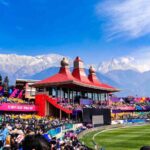CHAMBA RUMAL
The Chamba Rumal or Chamba handkerchief is an embroidered handicraft that was once promoted under the patronage of the former rulers of Chamba kingdom. It is a common item of gift during marriages with detailed patterns in bright and pleasing colour schemes Known as a “needle wonder” Chamba Rumal is now made in square and rectangular shapes. The materials used still consist of muslin, malmal, khaddar (a coarse fabric), fine charcoal or brush, and silk threads without knots. Using a double satin stitch for the embroidery, both faces of the cloth are concurrently stitched by a forward and backward technique to maintain uniformity of design on both faces of the rumal. After completing the embroidery, the fabric is stitched with a border of about 2 to 4 inches on all sides
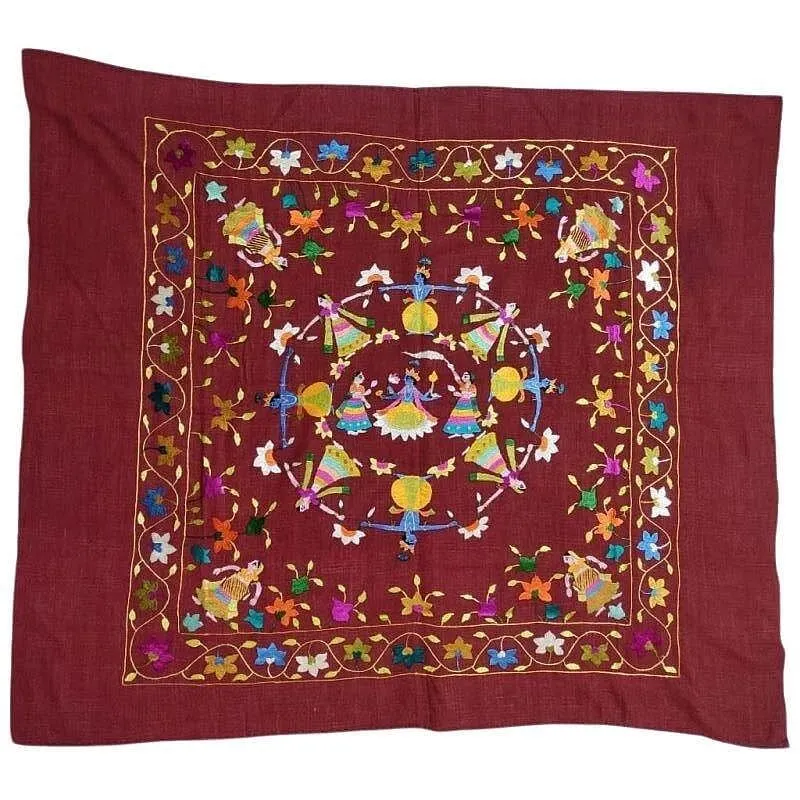

MINIATURE PAINTINGS
Pahari painting had two principal phases of development. The earlier phase that started from the mid-17th century is extraordinarily colourful with its primitive expression charged with vitality and emotional intensity. These early Pahari paintings can be distinguished by fish-shaped elongated eyes, oval faces, receding foreheads, round chins and prominent noses.
Bold figures are carefully laid against monochrome background of red, yellow, green or brown colours. Decorative pigmy trees suggest the feeling of perspective while the sky is indicated only by a narrow strip on the horizon.
The style underwent a change in the second quarter of the 18th century and a new phase of style developed in the Guler area. The paintings of this phase are done in a somewhat naturalistic manner. The vitality of the line toned down and acquires a lyrical character; the lines now seem to be flowing in a rhythmic way. The colour scheme also became slightly cooler and freshness in colour and delicacy in execution particularly in case of Guler-Kangra schools is remarkable.
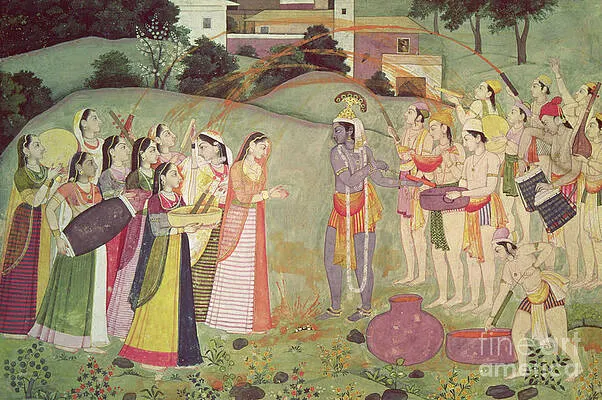
METAL CRAFT

The metal crafts of Himachal Pradesh not only serve the religious purpose but they serve as utilitarian items also. As per the history, the metal craft in Himachal Pradesh grew because the courts of the Himachal kings had the craftsmen who were specialised in metalware in the 600 AD. Since that age, the artisans have been practicing the art and have mastered in this field of exclusive creations. The statuettes at temple entrances in Brahmaur, Chamba and the Vajreshwari Devi temple in Kangra are glaring examples of excellent craftsmanship. Even the temple doors of Vajreshwari Devi, Jwalamukhi in Kangra, Bhimkali in Sarahan and Chandika Devi in Kinnaur exhibit the Repousse technique in which the craftsmen excelled. A canopy made of gold at the Jwalamukhi temple is one of the most admired examples of the metal craft of Himachal Pradesh, which is believed to have been gifted by the Mughal emperor Akbar.
JEWELLERY OF HIMACHAL PRADESH
Jewellery from Himachal Pradesh is renowned for its unique and intricate designs, reflecting a blend of tribal and royal influences. Here are some notable pieces and characteristics of Himachal Pradesh jewellery:
Chak Necklace: A prominent piece from the Chamba region, the Chak necklace is significant during weddings and festivals. It symbolizes social status, familial prosperity, and blessings for a prosperous future. Crafted with gold and featuring intricate floral and geometric motifs, it is often embellished with precious gemstones like rubies, emeralds, or pearls.
Silver Work: Himachal Pradesh is known for its skilled silversmiths, particularly in villages like Maila, Sultanpur, and Chamba town. Silver jewellery often includes enameling in blue and green, and is crafted with sheet metal and wire. Designs include head ornaments, ear rings, arm pieces, necklaces, and forehead decorations.
Coin Necklace (Chandrahar): This necklace consists of several silver chains linked together by a pendant and plaques, which are usually enamelled in blue and green. It is one of the cherished ornaments in Himachal Pradesh.
Traditional Ornaments: Himachali women traditionally wear heavy silver ornaments, including headpieces, ear rings, arm pieces, necklaces, and forehead decorations. These ornaments are often embellished with elements of nature like flowers, leaves, and animal motifs.
STONE CARVING
Stone crafts of Himachal Pradesh are an integral part of tourism. They carry a discernable variety and a distinct style of stone carving that are displayed in the creations of colossal constructions and the other items created out of stone.
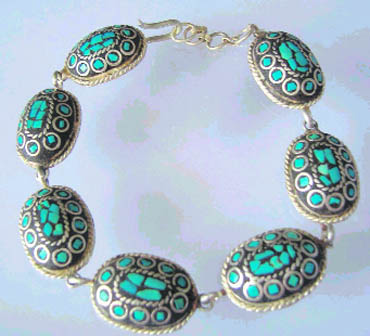
Himachal Pradesh has a variety of stones that are used for stone crafts. Among all, sandstone is predominantly used in the stone crafts of Himachal Pradesh. Even good quality lime stone is also used in large numbers. Rubble masonry is another stone which is mainly used for building purposes.The stones are available in Kangra, Bilaspur, Mandi and Kulu and the artisans create wide varieties of objects out of them. Kangra, Mandi, Bilaspur, Sirmaur, Chamba and Kullu have been traced as the traditional centres of stone crafts of Himachal Pradesh. The people of Bataihra or Batada community are adroit in stone carving.
HIMACHALI CAP
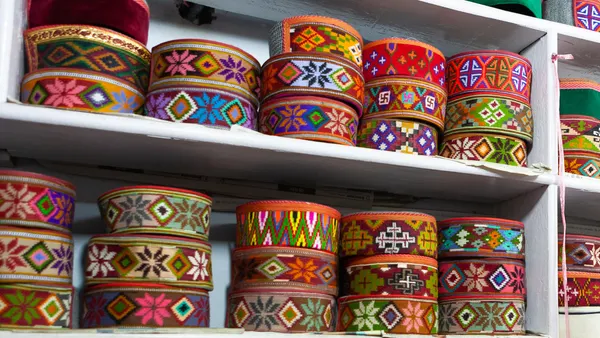
Like a pagri, or the turban in other parts of India, the Himachali topi is a necessary fashion wear during marriages, festivals, religious functions, fairs and other local events.
Traditionally, worn has a headgear to protect from the chilly winter winds, these colourful caps have percolated into cultural existence of the state to become the symbol of the state. There can’t be better memento or gift that represents a state better than the Himachali Topi. Although, there are other handicrafts, the beautiful Kullu shawls but nothing compares the charm of this traditional cap.
KULLU SHAWL
Kullu has been famous for its shawls with striking geometrical patterns and vibrant lives. Earlier, the Kulivi people used to weave plain shawls but after the arrival of Bushehari craftsman from Rampur, Shimla district of Himachal Pradesh, the trend of patterned handloom came into existence.
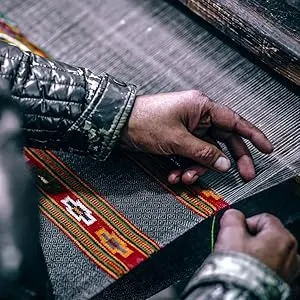 Typical Kullu shawls have geometrical designs on both ends. Besides geometrical designs, the shawls are also woven in floral designs, which may run all over, on the corners or on the borders only. Each design may have one to 8 colours. Traditionally, bright colours, viz. red, yellow, magenta pink, green, orange, blue, black and white were used for patterning and white, black and natural grey or brown were used as the base in these shawls.
Typical Kullu shawls have geometrical designs on both ends. Besides geometrical designs, the shawls are also woven in floral designs, which may run all over, on the corners or on the borders only. Each design may have one to 8 colours. Traditionally, bright colours, viz. red, yellow, magenta pink, green, orange, blue, black and white were used for patterning and white, black and natural grey or brown were used as the base in these shawls.
PULLAS
It is a handicraft most popular in upper reaches of Inner and Outer-Seraj in the Jalori and Bashleo pass regions. Pullans are grass shoes which are used as footwear.
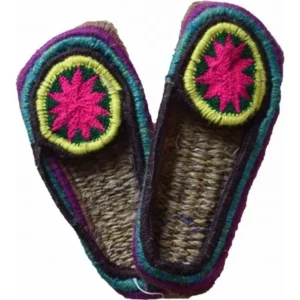 This footwear is made out of fibers procured from the bark of a wild bush, Bhang (Cannabis sativa Linn.). The upper portion of pullan is made of goat hair and is decorated with colourful designs using threads while the bottom of footwear is made of Bang fiber. These are available in different sizes and local people consider them as warm footwear.
This footwear is made out of fibers procured from the bark of a wild bush, Bhang (Cannabis sativa Linn.). The upper portion of pullan is made of goat hair and is decorated with colourful designs using threads while the bottom of footwear is made of Bang fiber. These are available in different sizes and local people consider them as warm footwear.


